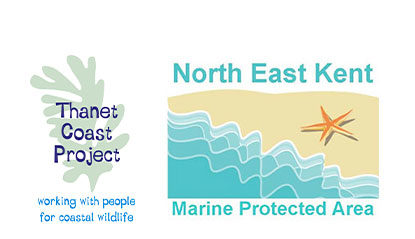Seaweed Harvesting Code
Seaweed Harvesting Code of Conduct
- Always consult Natural England and your local Inshore Fisheries and Conservation Authority (IFCA) before harvesting seaweed and obtain permission from the landowner {eg Thanet Council along most of the Thanet Coast}
- Harvest seaweed only by hand – mechanical methods should not be used.
- Do not use vehicles on the foreshore.
- Avoid disturbing wildlife such as seabirds and seals by keeping an appropriate distance away {avoiding winter times from 1.5 before to 1.0 hour after the high tide to avoid bird roosts from October to March, inclusive}
- Avoid or minimise trampling on non-target organisms and avoid taking ‘bycatch’ such as stalked jellyfish, brittlestars, bryozoans and blue-rayed limpets.
- Collect less than one third of an individual plant to allow for regrowth.
- Cut fronds (leaves) well above the point of growth (e.g. the meristem for kelps) and always leave the holdfast attached.
- Harvest sparsely, taking only a small percentage of standing stock.*
- Rotate harvesting areas to allow ample time for recovery. Harvested areas should be left for up to several years, depending on the species, before harvesting again.*
- Harvest seaweeds during the active growth season to allow for quicker recovery.*
- Harvest seaweeds after reproduction has occurred if possible and ensure a substantial proportion of mature plants remain.*
- Take extra care when harvesting invasive non-native seaweeds to ensure that seaweeds or spores are not transferred to other areas. Follow ‘Check, Clean, Dry’ biosecurity principles, checking, cleaning and drying all equipment and clothing when moving between sites to ensure that invasive species, pests and diseases are not spread to new areas. **
- Do not collect drift seaweed from the entire length of strandlines – harvest sparsely as this constitutes an important habitat.
- Keep records of volumes of each species of seaweed harvested, along with date and location.
- Limit harvesting in erosion prone coastal areas (i.e. dunes) & where kelp forests dissipate wave energy.
- Please be aware that foreshores can be hazardous. Do not put yourself at risk of injury by collecting seaweed in adverse conditions and be aware of tides.
- In NE Kent MPA, there is a presumption to avoid any collecting within the ‘Sandwich & Pegwell National Nature Reserve’.
- Seaweed and Driftweed is left on our beaches over winter (1 October to 31 March) for wintering birds to forage amongst – as part of the Thanet Coast SSSI Site Management Statement agreement between Natural England and Thanet Council.***
This code of conduct has been adapted from a draft code produced by Natural England and partners to encourage responsible and sustainable harvesting along the Cornish coast. *Consult Natural England for further information/ advice; ** For information on how to identify non-native seaweeds: www.nonnativespecies.org *** For more information about site designations and SSSI Site management statement
Further information:
- Seaweed & their Secrets walk and talks are run over the summer months – information and bookings are on the events page
- Seaweed – the facts, its uniqueness, and its management and removal from the bathing beaches in the summer – see Thanet District Council’s:
- Beaches in Thanet – includes seaweed management
- Seaweed information (with FAQs, 2020)
- Thanet Council – Seaweed booklet (2023, PDF 3.5MB)
- Exploring Kent’s seaweed coast (ITV Meridian, Aug 2018)
- Seaweeds & their Secrets Exhibition (July to Sept, 2018, Margate Visitor Information Centre): created by Ian Tittley (Natural History Museum & Kent Field Club) with help from the Thanet Coast Project & NEKMPA Coastal Wardens. Poster (JPEG, 548KB)

